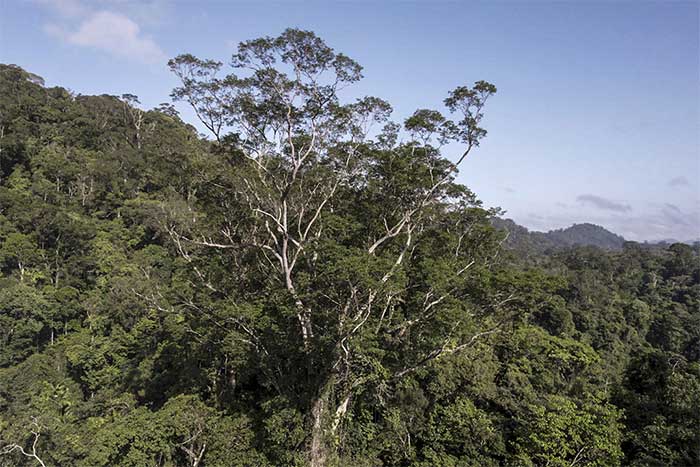Global warming is causing temperatures in tropical forests to rise close to the threshold where the canopy can no longer perform photosynthesis, which converts sunlight and absorbed CO2 into energy. This conclusion was drawn from a scientific study published in the journal Nature on August 24.
According to the research, a small percentage of the upper canopy in tropical forests has reached excessively high temperatures, up to 47 degrees Celsius, rendering it incapable of photosynthesis. Scientists state that while currently only about 0.01% of the canopy experiences such high temperatures, this could quickly deteriorate as leaves absorb heat faster than the surrounding air.

Amazon rainforest, near the Jari River in Northern Brazil. (Photo credit: AFP/TTXVN).
Christopher Doughty, a scientist at Northern Arizona University and co-author of the study, noted that if air temperatures rise by an additional 2 or 3 degrees Celsius, the actual leaf temperature in the upper canopy could increase by 8 degrees Celsius. According to Doughty, in the worst-case scenario where the average surface temperature of tropical forests increases by 4 degrees Celsius from the current level, it is likely that all leaves could die off.
The new study suggests that leaf death could become a new predictor of the “tipping point” – when tropical forests gradually disappear due to the impacts of climate change and deforestation. Additionally, the research indicates that tree canopies could experience mass die-offs within just over a century if air temperatures continue to rise by 0.03 degrees Celsius each year without intervention.
Researchers caution that it is not yet certain how much elevated leaf temperatures will affect the entire forest; not all leaf death necessarily means that the trees themselves will die. Furthermore, the critical temperature thresholds for different tree species vary and depend on leaf thickness and canopy size.
However, the current state of tropical forests shows concerning signs. Specifically, forests with above-average temperatures, such as the Amazon, have a higher rate of tree mortality in recent decades. Additionally, deforestation, which leads to sparser tree density, also contributes to increased temperatures in these areas.
With the findings of this research, scientists are urging a collective effort to protect the environment and ecosystems. The study utilized data from NASA’s ECOSTRESS satellite, which measures ecosystem thermal radiation, combined with field observations based on sensors attached to the leaves.
Tropical plant populations account for up to 45% of the world’s forest area and play a crucial role in absorbing CO2. According to the Intergovernmental Panel on Climate Change (IPCC), tropical plant populations contribute at least 50% of the world’s plant biodiversity, with a minimum of 40,000 different tree species.


















































